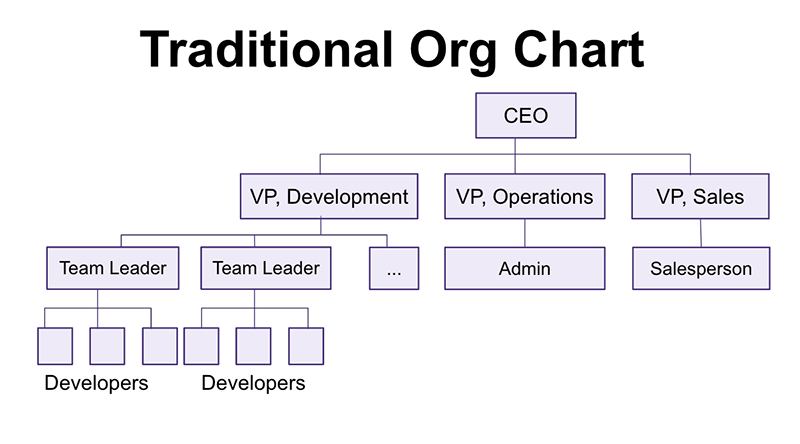Overcome the Growth Paradox Keeping You From 10X-ing Your Company

There's been a lot of talk about a possible recession. Is that something business owners really need to worry about?
To answer this question properly, I got together with Daniel Marcos for a Growth Institute webinar training. We discussed overcoming the growth paradox — the idea that as you scale, things should get easier. But the fact is, they don’t. Oftentimes, there’s more stress, more drama, and scaling can be downright painful.
The growth paradox occurs because of three common barriers. I’ve put together this article that recaps the barriers and what you need to overcome them.
Let’s begin by understanding that usually, the barriers keeping you stuck are not economic or industry related. Here’s why.
Consider the fact that the global economy is expected to be about 88 trillion by the end of 2019. If it drops by a record-breaking 5%, which would mark a recession, the economy would still be the same size as it was in 2018. That’s still plenty of pie that you can get a slice of.
Here’s why it’s also not an industry issue. While it’s true that technology may impact an industry, if companies learn to adapt and pivot, it’s possible to continue scaling. The equine industry exemplifies this perfectly. Instead of being wiped out by the automobile industry, it pivoted into entertainment and sports. Today, the equine industry boasts a global value of $300 billion.
If economics and industry factors are not the reasons why companies struggle to scale, what is?
What’s Really Keeping You Stuck?
In over 37 years of experience helping companies scale up, the three most common barriers I’ve seen stem from an internal complexity of growth.
Specifically, these three barriers are:
- Leadership: The inability to staff/grow enough leaders throughout the organization who have the capabilities to delegate and predict.
- Scalable infrastructure: The lack of systems and structures (physical and organizational) to handle the quagmire in communication and decisions that come with growth.
- Marketing: The failure to scale up an effective marketing function to both attract new relationships (customers, talent, etc.) to the business and address the increased competitive pressures (and eroded margins) as you scale.
#3: Marketing is Critical
I want to start at end for this list and dive deeper into the marketing function.
So let’s talk about marketing.
The challenge with marketing is that you’re selling to people. Even if you’re B2B, it’s not companies that you’re selling to. It’s people. And that’s where the focus needs to be.
Marketing is too often seen as glorified sales support when in fact, marketing needs to function separately from sales to attract the right — and most profitable — customers. Marketing also plays a role in attracting the right talent so your organization can keep up with the pace of growth as the company scales.
Ed Roberts, a senior faculty member of Sloan school at MIT, was a pioneer in researching high-tech, growing companies. His research team wanted to understand what was significant about those that scaled faster than others, and one of the keys they found was that these growth companies always had at least one person solely dedicated to marketing.
When a company does not have at least one person solely dedicated to marketing, and when marketing is absent from the people recruiting process, there will be a significant constraint to growth.
Now that you understand the importance of marketing, let’s now dig into the best secrets of marketing.
Regis McKenna, a marketer and author of the famous book, “Relationship Marketing”, had introduced many of the ideas that are now part of the mainstream in technology marketing. He also taught marketing to the late Steve Jobs, helping Jobs scale Apple to almost $1.9 billion while Jobs was still in his 20s.
When I launched the Entrepreneur’s Organization (EO) in 1983, I approached Regis and he agreed to mentor me as the only free client in the history of his firm.
Regis taught me the exact same things he taught Jobs and other Silicon companies about marketing, and it really boils down to two things:
- Schedule a regular marketing meeting separate from sales, and;
- Always nurture your top 25 relationship influencers (or 250-400 if you’re a large organization).
Having a regular meeting dedicated to marketing is so important, that it was the only meeting Steve Jobs led at Apple while Tim Cook led all the other leadership meetings.
In your marketing meeting, I recommend building an agenda around the 4E’s of Marketing, which is Ogilvy’s updated version of the traditional 4P’s of Marketing. Some of the key skills you will also require to make the right marketing decisions are knowing how to price your offers and negotiations.
Next, build up those relationships with those key players in your industry. Your selection criteria should be the people or brands who will be impacted by the vision you aspire to achieve. Every industry in some sense is small, so it’s better to narrow your focus.
Once you’ve put together your list, you should spend an hour every week figuring out how to get one of those key people to support what you’re trying to scale. Here’s a hot tip: the bigger the names, the faster you’ll scale.
This is another book I recommend: Never Eat Alone. You don’t necessarily need to read it, but I would encourage you to sit at your desk so you can see it every day. For me this is a reminder that the biggest indicator of success here is how many dinners, coffee chats, and breakfasts you have with the people on your list. That’s what it takes to build those relationships.
When I followed these steps for EO, we became a global organization within 36 months. We even got President Reagan, who was one of the influencers I had on my list, to deliver a speech on the importance of entrepreneurs in our 1986 convention in Los Angeles.
Case Study
When Tony Hartl founded Planet Tan Corporation, a tanning salon company, he wrote down a list of the most important brands he wanted to be associated with the company. Since the company was based in Dallas, Texas, the Dallas Cowboys Cheerleaders was an obvious choice. He also approached Mark Cuban, a multi-billionaire businessman and owner of the National Basketball Association's Dallas Mavericks, to become a spokesperson for his radio ads.
With these influencers in his corner, it was game over for his competitors. Coupled with the implementation of the Rockefeller Habits, Hartl’s net worth jumped from $10,000 to millions of dollars in a thirteen-year period.
Bottom line: Make marketing a dedicated priority. Remember that the single most important thing is your network and the people you’re able to attract through your marketing, from the right customers to the right key employees and influencers. Your key performance indicator is how much time you spend building relationships with the people or brands on your list. It’s also important to nurture relationships with influencers inside your company.
Recommended resources: “The 4E’s of Marketing” by Ogilvy; “Confessions of the Pricing Man” by Hermann Simon; “High Stakes Negotiations” by Dr. Victoria Medvec; “Relationship Marketing” by Regis McKenna; “Selling Sunshine” by Tony Hartl.
#2: Scalable Infrastructure Is Key to Accelerate Growth
Here’s a key challenge that comes up with people as you scale.
Traditional organizational structures that are hierarchical in nature are, unfortunately, not scalable.
This is because traditional structures were built to organize manpower for the industrial age. When there’s a problem, our tendency has always been to throw more people at it. A large portion of the economy, however, has transitioned from working with our muscles to working with our minds.
But our organizational structure didn’t change with this evolution. It’s actually become a barrier to growth. That’s why it’s important for you to transform your organizational structure into an agile scale-up model which mirrors the structure of our brain, instead of the structure of our skeletal system.
If you want to understand this deeper, pick up Reinventing Organizations. Skip the foreword, skip the first half, and go straight to part 2.
Another great book is Outrageous Empowerment. This is a more fascinating read. A security company in Canada managed to make every employee into a stakeholder. For me, this is the how-to book on how to scale your organization and infrastructure to make sure they don’t become barriers. 
The Agile Scale-Up Organization Chart
Case Study
Harvard Business Review published an article in 2008 about how Haier, a Chinese-based manufacturer with 74,000 employees, cleaned out 10,000 middle managers and organized the rest of the 64,000 employees into 4,000 micro-enterprises. Most of the micro-enterprises comprise of 10-15 employees where decisions are made by small autonomous teams.The result of this root-and-branch overhaul of its once-traditional management model has been a business growth of 23% a year over the past decade, while revenue increased by 18% annually. Haier has also created more than $2 billion in market value from new ventures.
Bottom line: To become an agile, scalable company, you need to move away from traditional hierarchical structures and evolve your organizational structure to become a “team of teams”. Your systems need to become scalable too. In the early stages of a startup, you can get by with email for customer support and a spreadsheet for customer relationship management. But in order to scale, your systems — from software and office space, to team structures and communication — need to grow with you.
Recommended resources: “Reinventing Organizations” by Frederic Laloux; “Team of Teams” by General Stanley McChrystal; “Outrageous Empowerment” by Ron Lovett.
#1: To 10x Your Business, 10x Your Leadership
What lies between our ears is usually the biggest barrier to our growth. That’s why, as entrepreneurs and business leaders, it's important to continually improve our knowledge in business and make sure our teams are regularly upgrading their skills too.
Bill Gates was known to have organized “Think Weeks” twice a year. During a “Think Week”, he would take 18 hours a day for seven days straight to pile information into his head. It was said that his Think Week record was 112 books, manuscripts, Ph.D. theses, and white papers. From all that he studied, Gates would begin to see the patterns and connections that kept him — and Microsoft — relevant through the times.
Warren Buffett’s first priority was to reserve much of his time for quiet reading and thinking, particularly that which might advance his determined learning, no matter how old he became. This included roughly 500 pages a day, including newspapers, so he would have a good grasp of the marketplace. This habit has been key to Warren’s success of beating the market by a factor of 10 for five decades.
Case Study
Henry McGovern was in his twenties when the Iron Curtain fell. Since Henry had spent three years of his childhood in Germany with his parents, he felt pulled to return to Europe. He moved to Poland and founded American Retail Systems, which is now known as AmRest.The company opened its first restaurant, Pizza Hut in 1993. Fast forward about 25 years later in 2018, Henry had scaled AmRest to almost 41,000 employees with a host of other world-class brands under his wing, including KFC, Applebees, Burger King, and Starbucks.
Not only did Henry scale his business, he did it highly successfully. He himself became the largest European owner of restaurants across 26 countries. AmRest outperformed the market, rising in value from $100 mill to over $3 billion since its IPO in 2005. In a period of 12 years since going public, AmRest’s share price performance outperformed Dominoes, who came second after AmRest, by a factor of two.
When reflecting upon his success, Henry said, “We have always been a training company first, and then a restaurant company.”
Henry’s dedication to training his employees throughout Eastern Europe has been the cornerstone of his scaling success, and why to this day the company’s hallmark is its unique high energy culture.
Bottom line: Creating a learning routine is crucial to develop yourself into the leader your company needs you to be. Your routine should also include surrounding yourself with people who can mentor and support you, as well as share their best learning experiences with you. It’s equally important that your leadership team - and other team members - are continuously undergoing learning and training to upgrade their skills in the company.
Recommended resources: “The Greatest Business Decisions of All Time” by Verne Harnish and the Editors of Fortune; “How to Win” by Mark Cuban; “Scaling Up” by Verne Harnish.
Wrapping it All Up
Whenever you find your company's growth stuck, or if you find your team steeped in daily drama destined for burnout, ask yourself these three questions:
- What can I do to increase my knowledge, as well as the knowledge within my leadership team and the broader employee base of my organization?
- How can we reorganize our people in order to create scalable infrastructure?
- What steps can I take to improve the state of our marketing effectiveness, from nurturing relationships with influencers to the 4E’s of Marketing?
Answering these questions will help you remove the three biggest barriers holding you back from 10x-ing your company.
If you would like to discover proven frameworks, systems and structures which will guide you to find the solutions to these questions, I encourage you to join my Scaling Up Master Business Course. It will provide you with a detailed road map and unparalleled support to 10x your company with less drama and more joy.
Join Scaling Up Master Business Course
If you’re looking for extra support to implement your winning strategy to help you thrive into 2020, then now is the best time to join our revamped Scaling Up Master Business Course.
Based on the key pillars of Scaling Up, this program is designed to help your organization adopt a new strategy quickly and efficiently. All the Scaling Up tools can be studied and implemented virtually – and we’re providing extra assistance by bringing in guest speakers, more live sessions, and an even stronger community support system than before.
Now is not the time to be alone. Surviving the crisis requires us to learn and stick together. Learn more about how we will help you practically scale your business with the Scaling Up Master Business Course so you can learn how to manage chaos and get aligned to thrive this year!




.png)